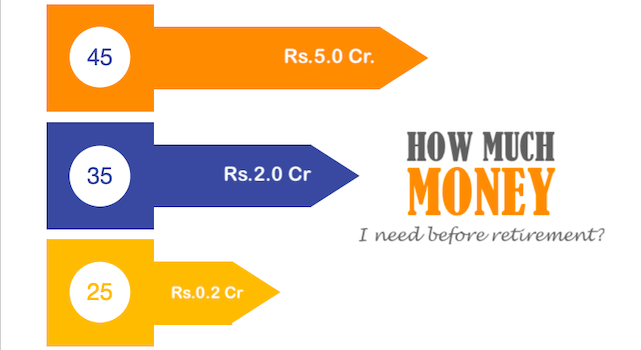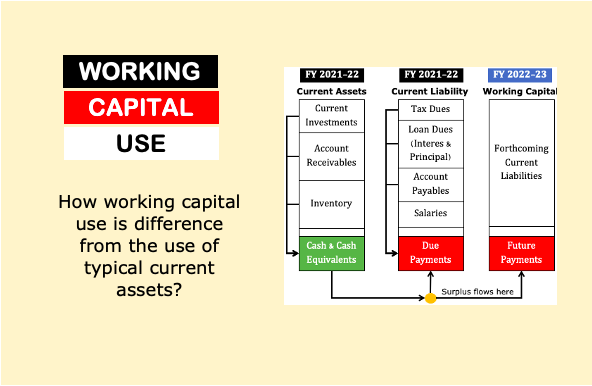Why do the big companies have debt? Are there disadvantages to being a debt-free company? Debt is Good or Bad for Companies?
We often see companies carry debt on their balance sheet. For example, here is data for companies in the BSE-500 index. Out of all stocks in this index, only 19% are debt-free. About 18% have a debt-equity ratio of more than one, and 63% have a debt-equity ratio between zero and one.

So what’s evident from this data set is that, the majority of companies carry some debt. Many of these debt-carrying companies have excellent business fundamentals. Among these companies, we’ve Tata Consultancy Services (TCS). It has been a zero-debt company for the last four financial years. But the question is, living on no debt good is for a business?
We’ll examine the debt on the balance sheets from this angle in this article. But before that, let me give you one more piece of data. This time it is about TCS. It will highlight the amount of cash the company is sitting on.

As of Mar’2022, out of the total capital raised by the company, they have 55% of it is parked in cash. Please note that I’ve also considered the current investment as cash. TCS has virtually no debt. Is it good for its investors?
Why we are raising this question about debt? For individuals, my blog talks about how to become debt-free. But for a company, avoiding debt may not be an excellent idea. Why? There are two main reasons:
Debt Financing is Good For Companies for These Two Reasons:
- Tax Deductions: In India, the income tax rate hovers between 25 to 30%. This tax rate is applied to the company’s reported PBT (Profit Before Tax). What is PBT? Its formula is PBIT minus Interest. Hence, for a company that has no debt, its interest expense will be zero. Hence, in a way, they will pay tax on PBIT. If this company had debt, it would’ve paid less tax. The interest deductions actually encourage companies to avail debt. No debt means, they will end up paying more taxes.
- Debt is Cheap: Equity financing is not cheap for the company. Why? Because when the company borrows money from shareholders, they are neither obliged to pay back the principal nor deliver any return. The return is paid in the form of dividends and price appreciation. But it’ll happen only if the company makes a profit. So, shareholders’ money is at risk when they buy stocks. Hence, their expectation of return is also high. Normally, in India, at least a 12% ROI from equity is a must. In this context, a company can get debt cheaper at 8% interest. Considering that interest paid on debt is also tax-deductible, the after-tax cost of debt will be around 6% for companies (assuming a 25% marginal tax rate).
These two main points in combination make debt good for companies. It is also true that had there been no tax deductions provided by the government, debt financing would not be as lucrative. Read more about it in the next section.
More on it…
For a listed company that has the potential to grow fast, the need for capital is high. For such companies, relying only on equity financing will be inefficient. Why? Because the shareholders’ expectations for returns are higher. If they will not get it, they will start selling and the market value of the company will take a beating. Such beaten-down stocks are more prone to a hostile takeover.
Including more debt in the capital structure will keep the Weighted Average Cost of Capital (WACC) low. It makes it easier for companies to yield better returns for their shareholders.
So why TCS is debt-free?
Considering the size of equity, the company is nearly debt-free. The cash flow of the company is strong. It is also one of the most profitable companies. At present, the company is enjoying its economic moat. But as the company will grow bigger, its cash flow will slow down. In those days, it might have to resort to more debt financing.
Excess Debt is Also not Good…
What we’ve seen till now states that debt is good for companies because it is more cost-effective than equity. So why not finance the majority of capital requirements from debt? What about the debt-equity ratio (D/E) of 9:1? It will make the business too risky for its shareholders (Owners).
Till everything is going well, debt financing looks seamless. But as soon as the company’s operations become loss-making, the threat of bankruptcy starts to loom for excess debt companies.
Hence, it is a must for companies to maintain a balance between debt and equity financing. A quick rule of thumb says that an acceptable debt-equity ratio is below one (1).
Excess debt can make shareholders uncomfortable. They may start selling their holdings assuming a threat of bankruptcy. Hence, it is important for listed companies to use debt moderately.
Debt & Risk of Leveraging
The use of debt reduces the company’s WACC. But the use of debt also has its drawbacks. Due to debt, a new fixed expense line item called interest gets added to the P&L account. An increased fixed expense means a higher break-even point. It puts pressure on the company to sell more to make up for the increased cost.
When a company uses debt to finance its business, it is actually taking advantage of a concept called financial leverage. But the drawback of leverage is that, at lower sales levels, due to increased cost, the profit members will be too low. But the higher will be sales, the better will be the absolute profit numbers. This is the reason why companies with high debt on their balance sheets are so obsessed with sales.
Another downside of leverage is the stock’s price volatility. Investors expect that, in a leveraged company, even small changes in sales numbers will dramatically affect the profits. Hence, people sell or buy stocks at every reported negative or positive top-line number. So, apart from the risk of bankruptcy, price volatility is another aspect that makes a debt-laden company risky for investors.
One Benefit of Debt – Debt Improves ROE
The point that encourages companies to use debt is that it improves the return on equity (ROE). Allow me to explain the effect of debt on a company’s ROE. Just to highlight the impact of debt on ROE, I’ve prepared a simple table (see below).

There is a hypothetical company whose total capital sourced is Rs.77,173 Crore.
Five instances highlighting the impact of debt on ROE:
- All Equity: In this case, all of Rs.77,173 cr capital is sourced from equity. As the company has zero debt, its return on capital and ROE are the same at 49% levels.
- 10% Debt: Out of Rs.77,173 cr capital, Rs.7,717 cr (10%) is sourced from debt. I’ve assumed an after-tax cost of debt as 6% per annum. In this case, the ROE of the company increased from 49% to 54%.
- 20% Debt: Out of Rs.77,173 cr capital, Rs.15,435 cr (20%) is sourced from debt. After applying the cost of debt at 6% per annum, the interest expense is Rs.926 crore. In this case, the ROE of the company increases to 60%.
- 30% Debt: Out of Rs.77,173 cr capital, Rs.23,152 cr (30%) is sourced from debt. At a 6% cost of debt, the interest expense is Rs.1,389 crore. In this case, the ROE of the company increases to 68%.
- 50% Debt: Out of Rs.77,173 cr capital, half is sourced from debt and the balance from equity. At a 6% cost of debt, the interest expense is Rs.2,315 crore. In this case, the ROE of the company increases to 93%.
Please note the real cause of the increase in ROE. The net profit is not increasing, but the equity base used to fund the capital requirement is decreasing. As the cost of equity is much higher than the cost of debt, hence, increasing the debt percentage in the total capital improves the return on equity
Another Benefit of Debt – Increases Distributable Funds

In this example, we are considering two cases. The first is when the company is using only equity financing. Second is when both the suppliers of capital, shareholders and lenders, are utilized and the company’s capital structure is 50%-equity and 50%-debt.
As shown in the calculation, it is visible that the total distributable funds have increased in the second case by Rs,716 crores. In all equity financing, the total distributable funds were Rs,38,187 crores. In 50%-debt financing, the total distributable funds have become Rs.38,903 crores (35,816 + 3,087).
What is the reason for this enhancement of distributable funds? The interest expense is tax-deductible is the cause of it.
Conclusion
Using debt to finance a business has its benefits. But it does not mean that a company can continue to raise its debt levels beyond proportions. For sure, the presence of moderate debt lowers WACC and enhances the return on equity. As the interest paid on debt is also tax-deductible, the presence of debt also improves the company’s distributable funds.
But we may also not forget that very high debt to equity ratio may make shareholders uncomfortable. Moreover, beyond a certain debt level, the loan providers may refuse to lend money to the company. So this limits the borrowing power of a company.
The threat of excess debt is real. But there are corporations that thrive on a zero-debt policy. Till the company is enjoying robust cash flows, all equity approaches will work. But when growth becomes a priority, CAPEX needs will rise. In such a case, most companies will have to resort to some debt financing. Avoiding debt even in such times can prove to be a wrong business move. Why? Because in absence of debt, and lack of sufficient cash flows, the company may not grow as fast. The competitors might capture the market and eventually, the zero-debt policy might take the company out of business altogether (in long term).






